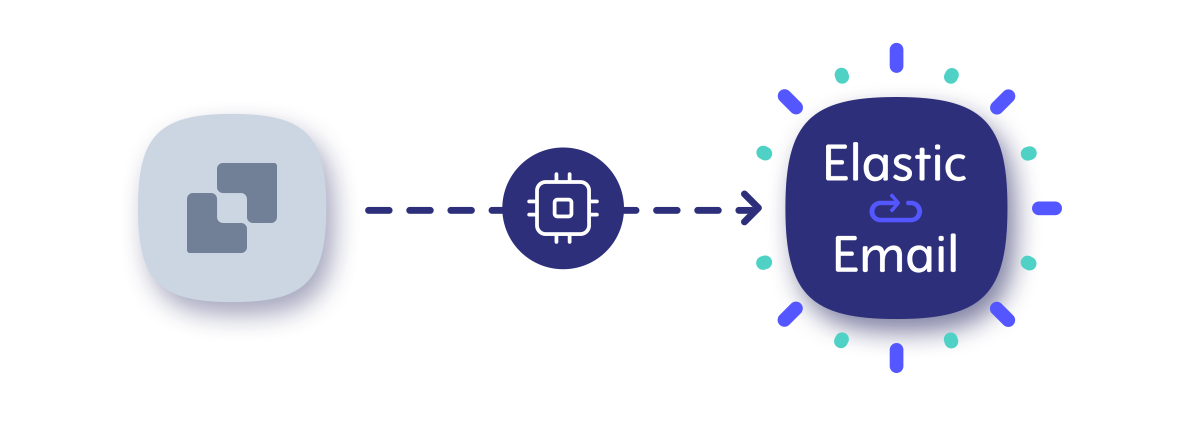When you decide to send emails through an email service provider (ESP), you face the question of whether to use email API or SMTP relay. You should base your decision on your sending needs, your priorities and your level of coding knowledge. Let us guide you through the characteristics and the pros and cons of both email transfer methods so that making the choice will be a no-brainer.
Table of Contents
Email API
Email API stands for an Application Programming Interface. In general, we use APIs as connectors between applications to perform certain functions. When it comes to emails, the situation is exactly the same. By using email API, you can integrate the features of an email service provider within your application or website. That is why you can send transactional or bulk emails through your ESP directly from your app or webpage. All you need to do is generate an API key in your email service provider account and paste it into a specific field to integrate the app. Then, you can start performing various email-related requests listed in the API documentation of your ESP.
Does it sound a bit complicated? Email API offers a multitude of options, but may be challenging especially for less experienced users. This is why we would love to break down the main pros and cons of this email transfer method for you.
Pros:
- Fast delivery - less back-and-forth between servers, so emails are delivered immediately, even when sent in bulk,
- Better security - using the API key adds an extra layer of security and protects your account from misuse by phishers and spammers,
- Less blockage - email API uses HTTP, so it is allowed by most firewalls
- Analytics - you can track various email events, including delivery, open and click rate, and other statistics,
- Flexibility - by setting up email automation, you can decide how the platform reacts to pre-set triggers,
- Unique access levels - when you create a new API key for a new user, you can freely set its unique access level.
Cons:
- Coding knowledge required - you need programming skills to configure email API and execute email sending,
- No unique specification - unlike SMTP, email API has no implementation standard, so email service providers differ in the solution for integrating with their email API,
- Frequent updates - email APIs usually undergo constant changes, so you have to keep up with these updates.
Who is email API for then?
Email API is definitely a great solution for application developers. Not only do they have no problem with the integration process, but also using the API documentation is not a challenge for them. It may be an optimal solution for experienced marketers who have some coding knowledge. Email API is also a perfect fit for bulk email senders due to its high deliverability and fast delivery.
SMTP relay
SMTP is an acronym for Simple Mail Transfer Protocol, and it has been around for four decades now. Thanks to SMTP, you can send your emails directly from your hosting or domain. This protocol includes the set of procedures and principles to be used in sending emails.
How is it different from email API? Well, SMTP is only used to send, receive and transfer emails. It means that its functionalities are limited in comparison with the more advanced API. Yet, it does not mean that SMTP is worse by definition. For some users, it is the perfect solution for their sending needs. As email API, SMTP has its assets and drawbacks.
Pros:
- Easy setup - SMTP is widely used, so the setup process is easy and quick as it only requires providing your mail user agent with your SMTP credentials. Also, there are many ready-made apps, including free ones, that handle SMTP sending in a simple way,
- No coding knowledge required - once you set up your SMTP relay, you do not need to have programming experience to send emails,
- Platform-independent - there are no restrictions, SMTP can connect to any system, platform or application,
- Fast error recognition - if anything goes wrong, you immediately receive a notification about the problem.
Cons:
- Slow delivery for bulk emails - there is more back-and-forth between servers, so it may slow down the sending process, especially in high volume,
- Unstable deliverability - multiple interactions also increase the chances of failure which may compound email deliverability,
- Blockage risk - SMTP ports may sometimes be blocked by firewalls as a precaution because SMTP relay runs on a different port number than API.
Who is SMTP for then?
As you can see, SMTP also has its strengths and weaknesses. It is definitely easier to use, so it may be a perfect solution for casual email senders, who do not send bulk emails. SMTP is universally used so it can also be integrated with already existing applications, such as CRM platforms. So, if you aren’t a developer who builds their own app, SMTP may be something for you.
Email API or SMTP: the final decision
Neither email API nor SMTP are the one and only protocol for sending emails. The choice between these two depends on your sending needs. First and foremost, email API is perfect for app developers, because they have the necessary programming knowledge. Because of its high and fast delivery, Email API is also beneficial when sending bulk emails. Sending through email API is more secure due to API keys and provides you with detailed statistics. Yet, you have to stay up-to-date with all the changes email API frequently undergoes.
If you are an occasional sender and you are not focused on sending emails in high volume, SMTP seems to be a more suitable option. Even though email deliverability may not always be stable because of multiple back-and-forths between servers, it is extremely universal and easy to set up. Also, once you configure the SMTP relay, you do not need to have any coding knowledge to start sending an email using this protocol.
Good luck with making a choice!
Key Takeaways
- The decision between using an Email API or SMTP relay for sending emails depends on your sending needs, priorities, and coding knowledge
- Email API (Application Programming Interface) allows you to integrate email service provider features directly into your application or website to send transactional or bulk emails
- It is ideal for application developers, experienced marketers with coding knowledge, and bulk email senders due to its high and fast deliverability
- SMTP (Simple Mail Transfer Protocol) is used for sending, receiving, and transferring emails directly from your hosting or domain
- SMTP is a good solution for casual email senders who do not send bulk emails, or for integration with existing applications like CRM platforms
Eager to put this knowledge to some use?





